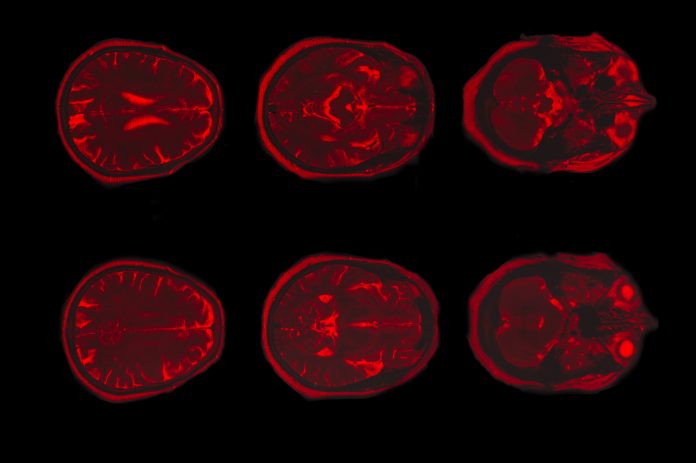Here, we look at MRI research on brain abnormalities that could be the biological reason behind depression
The Renaissance School of Medicine at Stony Brook University examined Major Depressive Disorder (MDD) and disruptions in the blood-brain barrier (BBB), focusing on the way that water moves out of blood vessels and into the brain tissue as one of the reasons behind depression.
Dr. Wengler and their colleagues focused on the BBB, a network of blood vessels and tissue that protect the brain from foreign substances. They applied a new MRI technique, which they named intrinsic diffusivity encoding of arterial labelled spins (IDEALS), which helps to analyse BBB water permeability.
What is Major Depressive Disorder?
Kenneth T Wengler, PhD, from Columbia University in New York City and co-author of one of the studies said:
“Unfortunately, with current treatments, there is a large chance of relapse or recurrence.
“To develop new, more effective treatments, we must improve our understanding of the disorder.”
MDD is a globally experienced, debilitating mental disorder, which brings impaired function (socially, at work, educationally), an unrecognisable mood that deviates from a person’s natural self and a loss of interest in daily life that exceeds two weeks. Currently, the lack of full understanding in the scientific community about the brain changes leave doctors in the dark about future treatment possibilities.
What are the DSM-IV symptoms for depression?
1. Depressed mood or irritable most of the day, nearly every day, as indicated by either subjective report (i.e. feels sad or empty) or observation made by others (e.g., appears tearful)
2. Decreased interest or pleasure in most activities, most of each day
3. Significant weight change (5%) or change in appetite
4. Change in sleep: Insomnia or hypersomnia
5. Change in activity: Psychomotor agitation or retardation
6. Fatigue or loss of energy
7. Guilt/worthlessness: Feelings of worthlessness or excessive or inappropriate guilt
8. Concentration: diminished ability to think or concentrate, or more indecisiveness
9. Suicidality: Thoughts of death or suicide, or has a suicide plan
What happened in the depression imaging study?
Study 1: 28 people
Dr Wengler said:
“We observed disruption of the blood-brain barrier in gray matter regions known to be altered in major depressive disorder.
“This study helps improve our understanding of the pathophysiology of depression and can open new avenues of treatment for a disorder that affects over 100 million individuals worldwide.”
The team compared results in 14 healthy individuals and 14 MDD patients, finding that in the MDD patients’ group, less water moved from inside the blood vessels to outside. The integrity of the BBB itself is thought to be disrupted, pointing to a possible biological reason behind depression. In the amygdala and the hippocampus, the difference was particularly large between healthy individuals and MDD patients.
Study 2: 132 people
Whilst research has previously focused on characterising connections between brain regions as a reason behind depression, this one by researchers at the University of North Carolina (UNC) wanted to go beyond the connections and focus on individual brain regions themselves, to understand how they influence decision-making.
The connectome is the complex network of connections in the brain. Abnormalities in the connectome are thought to be responsible for depression, but which ones?
Researchers compared 66 MDD patients and 66 healthy individuals as controls. Using wakeful rest, functional MRI (fMRI) and a newly developed multiscale neural model inversion framework links the brain’s microscopic circuitry with larger-scale interactions. During this, the researchers assessed excitatory or inhibitory influence between neuronal cell groups.
As part of the connectome, the balance between excitation and inhibition is essential for a well-functioning brain.
Study co-author Guoshi Li, Ph.D., from the Image Display, Enhancement and Analysis (IDEA) group at UNC said:
“In our study, we found that excitation and inhibition in the brain regions in control of executive functions and emotional regulation were reduced in patients with MDD.
“This suggests that control functions in MDD are impaired, which may lead to elevated responses in the amygdala, resulting in increased anxiety and other negative moods.”
These abnormal patterns in MDD patients are found in the dorsal lateral prefrontal cortex, a region of the brain crucial to cognitive control functions. One of these functions is regulating the amygdala, a deeply embedded region in the brain that expresses emotions.
A long-held theory about the biological reasons behind depression is that symptoms can happen when the individual is unable to keep control over their amygdala functions.
Recurrent excitation in the thalamus, another central area of the brain that is responsible for emotional regulation, was also unusually high in patients with MDD.
Dr Li said:
“Current methods of studying the brain provide a superficial understanding of connectivity.
“This method allows us to identify impaired connectivity within each brain region, making it a potentially more powerful tool to study the neuromechanism of brain disorders and develop more effective diagnosis and treatment.”
Dr. Wengler’s co-authors are Kwan Y. Chen, M.D., Christine DeLorenzo, Ph.D., Mark E. Schweitzer, M.D., Turhan Canli, Ph.D., and Xiang He, Ph.D. The study was funded by Stony Brook University.
Dr. Li’s co-authors are Yujie Liu, M.D., Yanting Zheng, Ph.D., Ye Wu, Ph.D., Pew-Thian Yap, Ph.D., Shijun Qiu, M.D., Han Zhang, Ph.D., and Dinggang Shen, Ph.D. The study was funded by the National Institutes of Health.











